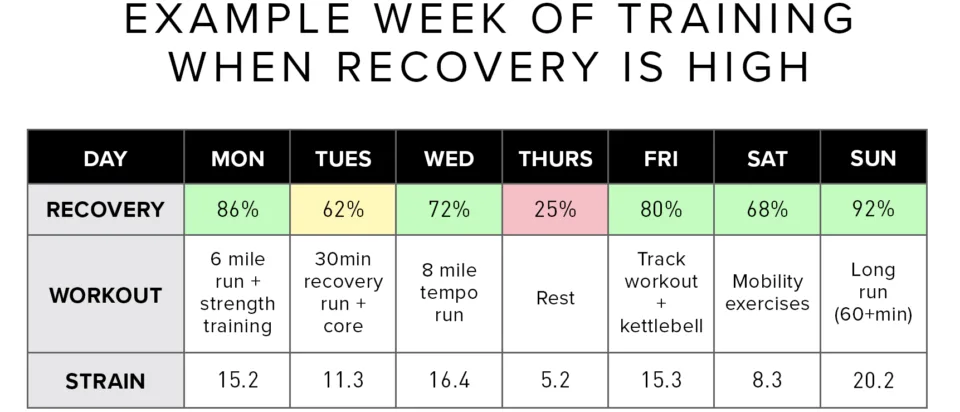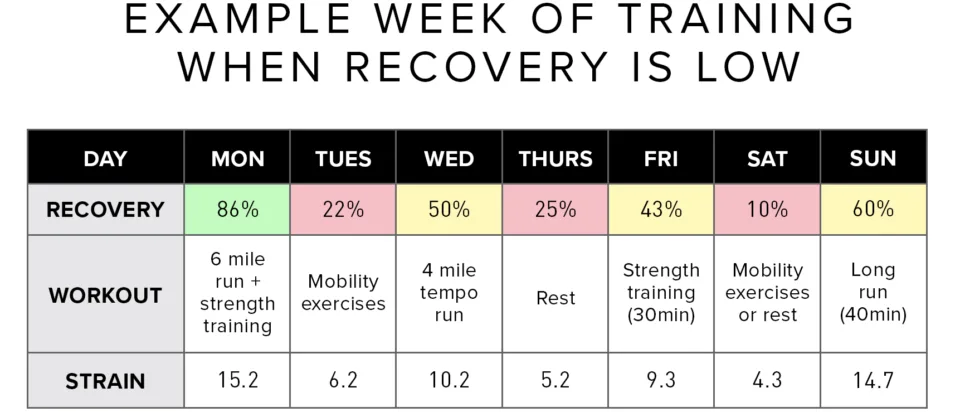Topics
- Article
- Running
How Often Should You Run to Optimize Training?

The more you run the easier it gets, right? Sort of. The key to success is training based on what your body is prepared to handle.
As a running coach, I’m frequently asked, “What should my weekly mileage goal be?” and “How many times a week should I run?” To which I usually respond, “Well, that’s a really complex question.” Yet regardless of their complexity, I honestly like hearing these questions. Nine times out of ten, it demonstrates the athlete is already intrinsically motivated (they want to get better at running because they enjoy it), which is sometimes the toughest barrier to overcome when it comes to commitment.
Why Do You Want to Run? How Does Your Body Respond to Training?
Runners who ask “how” instead of “why,” usually have a strong desire to lock a system into place to optimize their performance. My job as a coach is to help design and make that system actionable. Once you’ve defined your “why,” whether it’s an upcoming race, or maybe just a desire to run pain free, your next step is to learn how your body responds to training. How your body responds to training allows you to determine how to progress in training. Every training plan is unique. Not all feet strike the same. Not all runners have the same pace. Most runners think the more they run, the easier it gets. And while mileage is undoubtedly important, the volume of the miles run doesn’t matter nearly as much as the quality of them. Running is really demanding. Honestly, I’m slightly offended by how much running has literally “run me into the ground” at times, both mentally and physically. Luckily, in 2019 I discovered WHOOP, which changed my entire outlook on running, personally and professionally.
Training Based on How You Feel Can Be Misleading
For so long, I had based my workouts on “how I felt” that day. I thought, “I’m good at pushing myself, I have great form (which has been years in the making), and I have a general understanding of the importance of sleep.” And yet, some days It was like I was throwing the dice before workouts. Maybe I’d puke, maybe I’d PR. In March 2019, I signed up for my first ultra marathon attempt. The race was called Last Man Standing, with the premise being you run 4 miles every hour on the hour until you can’t. Both the style and distance of this race were new to me, which meant training for it was also going to be new. Since I’d run multiple marathons prior to this, I also knew there was an increased risk of injury associated with high-volume training (check out my previous post on how to prevent common running injuries). I needed a tool to provide me deeper insight into my personal metrics--hard data to provide immediate feedback based on my performance, in both sleep and training. I wasn’t about to go off “feel” when attempting to run 100 miles.

Meg uses WHOOP to guide her training and coaching.
Guiding My Training & Accomplishing My Goals with WHOOP
I signed up for WHOOP that same month. This was the first time I hadn't just “ran” while training. I trained smart. I based my workouts on the quality of my sleep. With WHOOP, I was more “in the know” with my body than ever before. I set a goal to run 50 miles at LMS. I had never run 50 miles before and decided hitting that marker would be gold for me. As it turned out, I completed 67 miles of my ultra marathon, 4 miles every hour for 16 hours. Accomplishing this felt great. But I later learned the true victory was in the small epiphanies I had during training, the strategic steps I took in order to achieve what I achieved. What I learned throughout my training ultimately transformed me, both as a coach and as a runner. Training more intelligently leads to greater self-efficacy because there is little room for doubt. Greater self-efficacy leads to success. I’ve been using WHOOP ever since. Having scientific-backed data behind “how I feel today” has taught me how to make non-negotiable decisions when it comes to training. So back to the original question...
How Often Should I Run? The Importance of Sleep & Recovery
Your body‘s ability to perform is based on the quality of your recovery. Balancing these two metrics allows you to create a successful system. Creating a successful system leads to success with your training. Once you see progress, it's harder to quit. And as a fellow runner, if I’m putting in the work, I want it to work. Think of it like this: A fully charged Tesla will go further than a half-charged Tesla, and a fully charged body will run further than a half-charged body. That is why sleep is so important. There are 4 stages of sleep: Wake (periods of time when you’re awake throughout the night), light sleep (the transition stage to deep sleep), SWS (physically restorative sleep), and REM (mentally restorative sleep). How much time you spend in each stage will help determine the quality of your recovery. In order to optimize performance, you want to save the more intense training for when your body is fully recovered. A significant part of this is getting quality sleep in the two major restorative phases: REM and SWS (which stands for slow wave sleep). These sleep stages improve nervous system function, repair muscle tissue, and promote growth hormones. And as I’m sure you can imagine, optimizing running performance after deep sleep is much easier than trying to perform when your body isn’t prepared to. When you optimize performance based on recovery, you get to do cooler things like improve running efficiency so you learn how to expend less energy running further distances. You can do this because your body is primed to run efficiently.

You can run and train more efficiently when your body is properly recovered.
Improve Running Efficiency with Training Based on Recovery
Running efficiency includes everything from the mechanics in your stride cycle, to your ability to control your pace. These factors directly affect how far and how fast you run. Your gait cycle (how your foot hits the ground and what happens in the kinetic chain) can be affected by muscle imbalances which cause you to expend more energy than necessary. Incorporating runner-specific strength training, along with mobility, helps the body move more efficiently and with more power. The stronger you are, the less energy you expend while running. And you guessed it, your body’s ability to run efficiently depends on the quality of your recovery. The Project PR running study done by WHOOP is a great example of how recovery affects performance. In this study, every week, participants had a mix of running workouts, including intervals, hill sprints and recovery runs. For participants following the static training plan, runners had a singular workout regimen each day. Other participants following the dynamic plan had to adjust their workouts based on their red, yellow, or green WHOOP recovery (a daily metric for how prepared your body is to perform which incorporates sleep, heart rate variability, and other key vitals) with 3 corresponding options to choose from. The findings concluded: “On average, participants who modulated workouts based on recovery were up to 32.4% less likely to experience injury than those who followed a static plan. These injuries were self-reported and ranged from common injuries such as shin splints and achilles tendonitis to more sidelining injuries, like a pulled muscle or stress reaction.” In addition to that, the study showed that participants using WHOOP were more likely to prioritize hours of sleep and recovery protocol, and they improved 5k performance by doing less work compared to the control counterparts. Recovery is just as important to progress as performance is. READ MORE: Why is My Heart Rate High on Easy Runs?
Charts for How Much You Should Run Per Week
Below I’ve shared two examples of a weekly training plan for a competitive distance runner. The first is when the athlete’s body is generally well recovered, the second is when it is not.

Chart 1: Increased training volume when your body is well recovered.

Chart 2: Decreased training volume when your body is poorly recovered.
In Chart 1, the athlete has a week of generally high-quality recovery, which means the mileage is higher, the weight training volume is higher, and there are only a couple rest/active recovery (mobility) days. In Chart 2, since the athlete’s recovery is lower all week, the mileage is less, there are more rest days, and there is less intensity (quantified by WHOOP as strain, a measure of cardiovascular exertion on a 0-21 scale). Optimizing performance is directly correlated with recovery. If you are training at a high volume, or for a race, plan on sleeping and resting just as hard as you train! Learn More: Running Heart Rate Zones